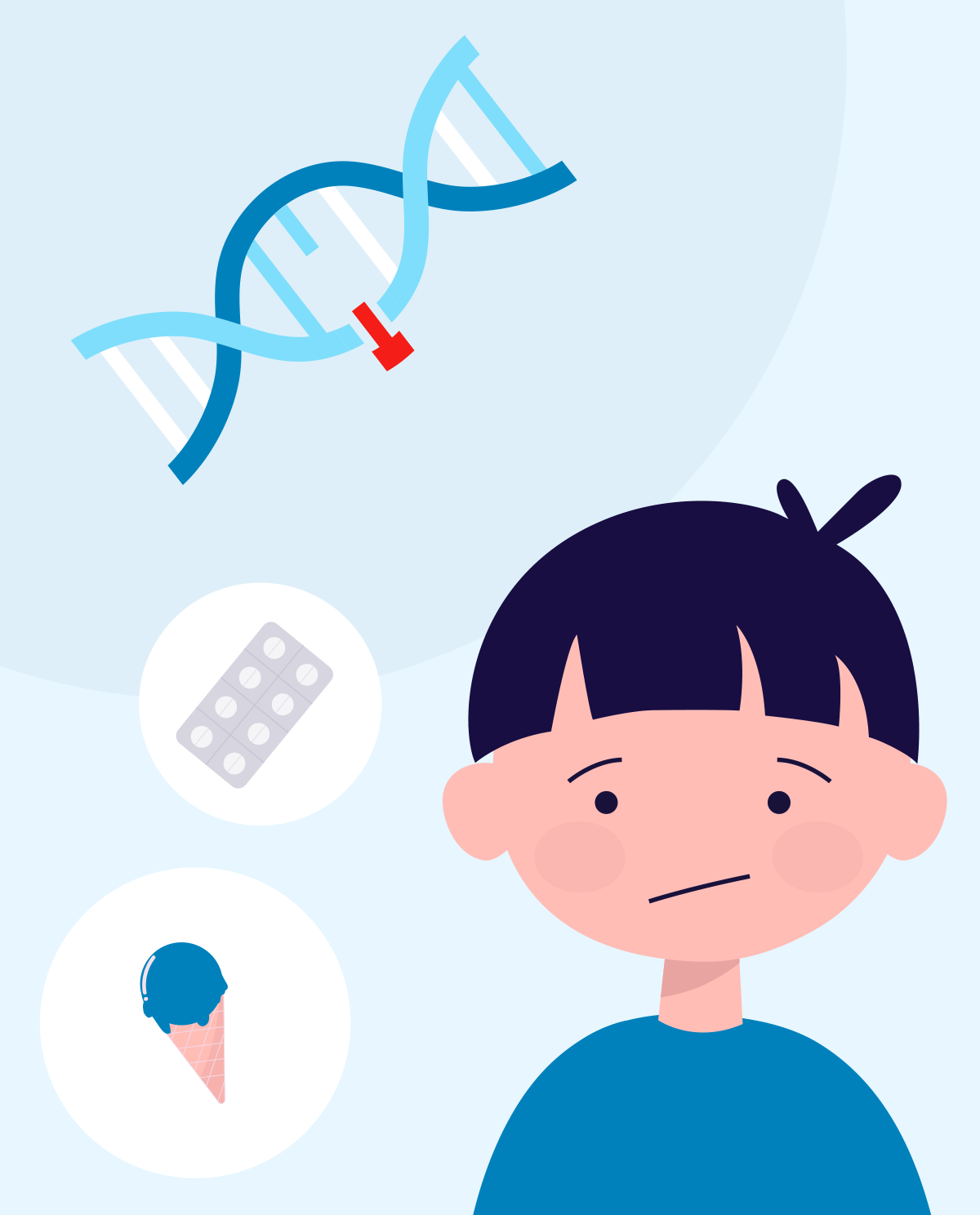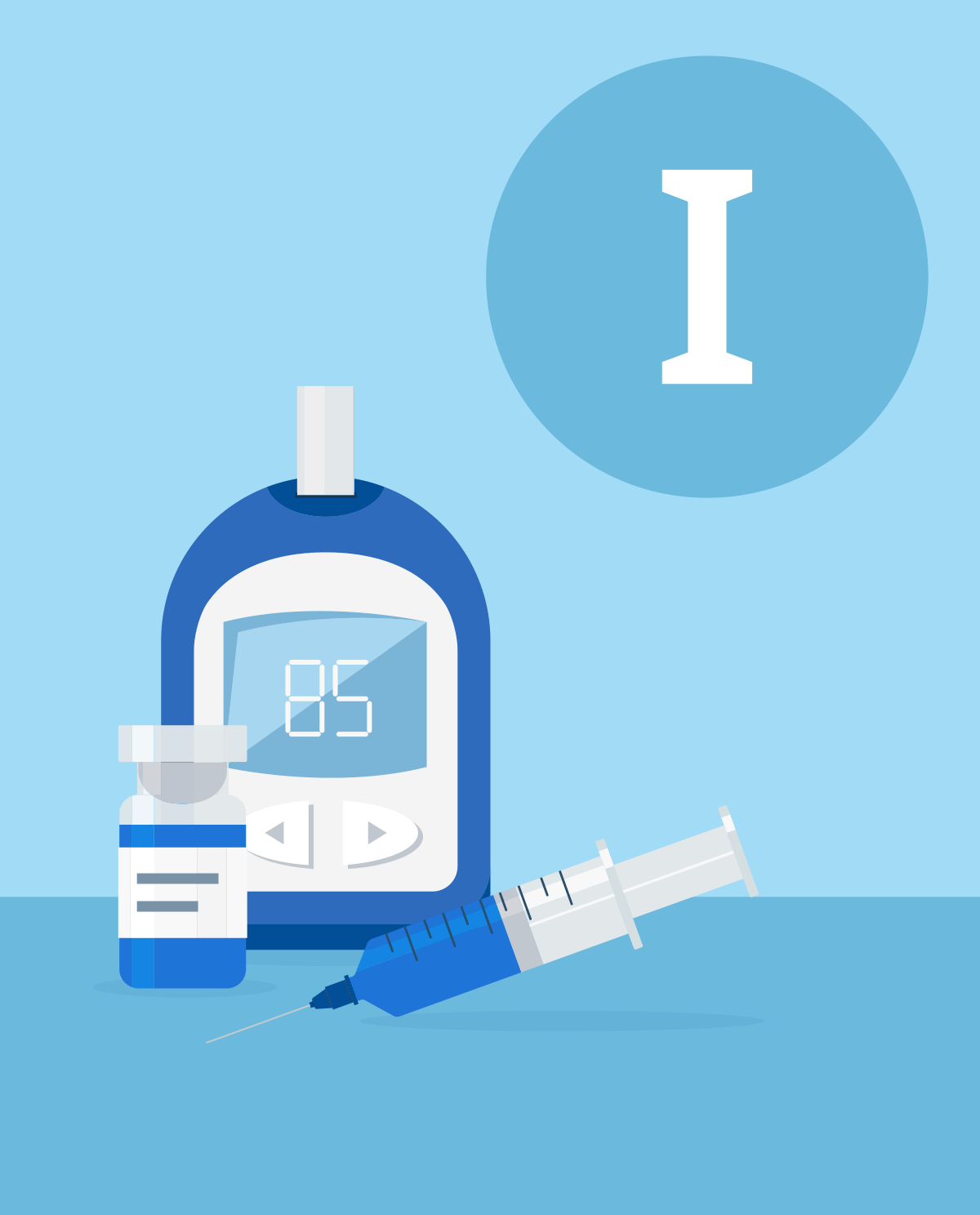Monogenic diabetes
In recent years, there has been an increase in the incidence of diabetes in almost every age group. So far, it has been assumed that the finding of diabetes in a child or young adult entitles you to diagnose type 1 diabetes, while the presence of hyperglycaemia in an adult allows for the diagnosis type 2 diabetes.
However, the increasing availability of genetic tests allows for a quick and accurate diagnosis of monogenic diabetes. Proper diagnosis determines better forms of treatment and can protect the patient from unnecessary insulin therapy.
Monogenic diabetes occurs in the following forms, the majority of which are associated with the dysfunction of insulin secretion. The most common of these are:
- MODY diabetes,
- mitochondrial diabetes,
- neonatal diabetes.
When can we suspect monogenic diabetes?
Doubts about the subordination of the diagnosis to the right type should occur when diabetes is characterized by a mild clinical course and occurs in several people in the family (both type 1 and type 2).
The basis for verification of a pre-established diagnosis is:
- no confirmation of the presence of typical autoantibodies in the diagnosis of type 1 diabetes,
- the presence of endogenous insulin (produced by your own body), despite many years of type 1 diabetes, which is also associated with very low daily demand for exogenous insulin,
- early and mild onset of the disease, usually between 10 and 30 years of age, rarely in the 4th decade,
- no ketoacidosis at the time of diagnosis,
- normal weight or low overweight, no hypertension and lipid disorders in a person with type 2 diabetes without insulin resistance,
- finding the presence of this disease in at least three generations in the family regardless of gender.
- more frequent occurrence of microvascular complications (with the exception of the type associated with a mutation in the glucokinase gene), such as diabetic retinopathy, nephro- and neuropathy - usually associated with long duration of the disease,
- less frequent than in type 2 diabetes type macrovascular complications (atherosclerosis, stroke, myocardial infarction, ischemic heart disease) - associated with the lack of other risk factors for atherosclerosis.
In order to diagnose diabetes of this type, specialized genetic tests are used, which are only currently performed in people who have been confirmed by the doctor managing the indications. Diabetes centers involved in genetic research for monogenic diabetes in Poland are:
- Department of Metabolic Diseases, Jagiellonian University Collegium Medicum, ul. Mikołaja Kopernika 15, 31-501 Kraków, phone: 12 424 83 01,
- Clinic of Clinical Genetics, Medical University, ul. Pomorska 251, 92-213 Łódź, phone: 42 272 53 55
MODY Diabetes (Maturity Onset Diabetes of the Young):
- constitutes approx. 1-2% of all cases (about 30,000-60,000 people in Poland),
- is inherited in an autosomal dominant manner, i.e. it is characterized by the same frequency of incidence in both sexes and is passed on to next generations, both by women and by men,
- symptoms usually appear in the 2nd or 3rd decade of life,
- is characterized by an early and mild onset without ketoacidosis and by preserved endogenous insulin production.
MODY diabetes can be diagnosed by:
- Determination of the level of fasting blood sugar.
- OGTT, an oral glucose load test.
- HbA1c glycated hemoglobin test.
- Test for the presence of antibodies against pancreatic beta cells.
- Genetic research.
Treatment of MODY
MODY can sometimes be controlled more effectively than other types of diabetes. Treatment of MODY 2 is only about the use of an appropriate diet. In the MODY 3 type, due to the high sensitivity to sulfonylurea derivatives, it is possible to successfully use these drugs for many years. In other cases, sufficient treatment may be the use of oral medications which lower blood sugar levels. In some types however, insulin therapy is needed.
Mitochondrial diabetes
- type 2 diabetes inherited from the mother,
- is associated with differences in the sequence in the mitochondrial DNA,
- usually diagnosed in the 3rd to 5th decade of life,
- it is characterized by a reduction in insulin secretion,
- there may also be abnormalities in other organs, visualized in ECG abnormalities, through proteinuria or muscular dystrophies
- can be treated with a diet and sulphonylurea. However, early ineffectiveness of these drugs often occurs and then the patient requires the implementation of insulin therapy.
Neonatal diabetes
Neonatal diabetes is defined as having diabetes before the age of nine months. This always requires differential diagnosis with type 1 diabetes. It can occur as:
- Transient neonatal diabetes mellitus (TNDM), which disappears in a few to several weeks after diagnosis.
-
Permanent neonatal diabetes mellitus (PNDM), which is permanent. Newborns with PNDM are also characterized by:
- low birth weight,
- often significant hyperglycemia,
- sometimes ketoacidosis may co-exist,
- in contrast to typical type 1 diabetes, there is no presence of autoantibodies against β-cell antigens,
- usually the diagnosis is based on the search for mutations in the KCNJ11 gene encoding the Kir6.2 protein - this is the most common mutation found in this type of disease. If confirmed, effective and safe therapy with sulfonylurea is possible regardless of the child's age.
- other less frequently detected mutations concern the insulin gene and the glucokinase gene (confirmation of these mutations requires the implementation of insulin therapy) and the ABCC8 gene encoding the SUR1 protein (in this mutation there is a possibility to take a sulphonylurea therapy, an alternative to insulin therapy).
- Interna Szczeklika 2018 Manual of Internal Diseases, Authors: Piotr Gajewski, Andrzej Szczeklik Publisher: Medycyna Praktyczna
- Collective work, Carbohydrate metabolism disorders [in:] Andrzej Wojtczak (ed.), Internal diseases, ed. II amended, Warsaw: Medical Publishing House PZWL, 1995
- http://www.mp.pl
- https://www.mp.pl/pacjent/
- https://diabetologia.mp.pl/wytyczne/104735,mody-rzadki-rodzaj-cukrzycy-jak-ja-rozpoznac-i-leczyc-cz-1
- http://test-diabdiscom.diabdis.com/blog/cukrzyca-monogenowa/
- https://www.mp.pl/cukrzyca/cukrzyca/MODY/65892,cukrzyca-mody
- http://endokrynologiapediatryczna.pl/contents/files/a_1512.pdf
- https://journals.viamedica.pl/clinical_diabetology/article/viewFile/8583/7314








